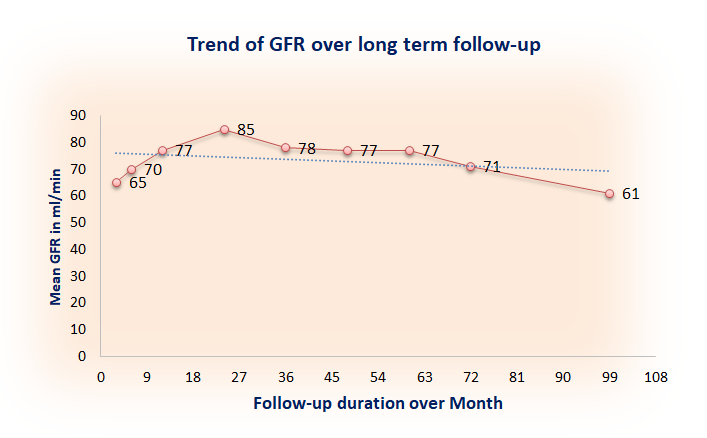Sometimes the best option available to you is none at all! 14 years of experience with Maastricht category IV donation after circulatory determination of death
Amit Sharma1, Sarbpreet Singh1, Ashish Sharma1, Deepesh B Kenwar1, Shiva Kumar SP1, Kajal Jain2, Jasmine Sethi3.
1Renal Transplant Surgery, Post Graduate Institute of Medical education and Research, Chandigarh, India., Chandigarh, India; 2Anesthesia and Critical Care, Post Graduate Institute of Medical education and Research, Chandigarh, India., Chandigarh, India; 3Department of Nephrology, Post Graduate Institute of Medical education and Research, Chandigarh, India., Chandigarh, India
Introduction: Donation after circulatory determination of death (DCDD) donors are increasingly considered a viable organ supply and are adding to the global donor pool. The current study aims to evaluate the results of Maastricht Category IV DCDD kidneys.
Method: To examine the results of Maastricht Category IV DCDD kidneys, a single-center retrospective study was conducted between February 2011 and April 2025. The patient information was obtained from file records, an electronic database, and outpatient department (OPD) follow-ups.
Results: 42 kidneys were removed from 21 suitable DCDD donors. Seven kidneys (16.6%) were discarded (6 unsuitable and 1 without a recipient), leaving 35 kidneys (83.3%) that were used. A total of 31 individuals—27 single kidney recipients and 4 dual kidney recipients—with a mean age of 41±11.7 years were given kidneys. The average age of donors was 31±15 years, and most of them suffered head traumas (15/19). The mean warm ischemia time was 56±8.9 minutes. The rates of primary non-function (PNF) and delayed graft function (DGF) were 9.67% and 70.9%, respectively. There was a 7.14% early rejection rate. During the study period, there were 8 graft losses (25.8%)—3 PNF and 5 following initial function. The eGFR showed a significant increase (P=0.0039) up to two years following transplant, followed by a decline.
The percentage of DCDD kidney recipients in the whole donor pool was 7.5% (31/411).
Conclusion: In situations where managing Maastricht category III kidneys proves to be challenging, Maastricht category IV kidneys have demonstrated comparable efficacy to DCDD kidneys retrieved from other parts of the world.